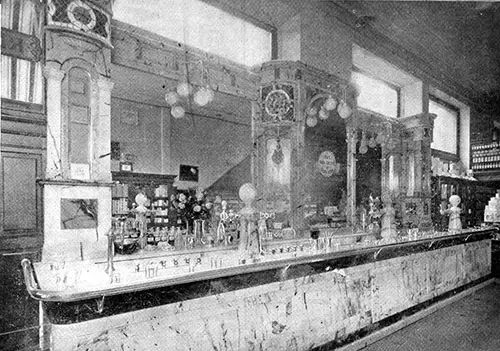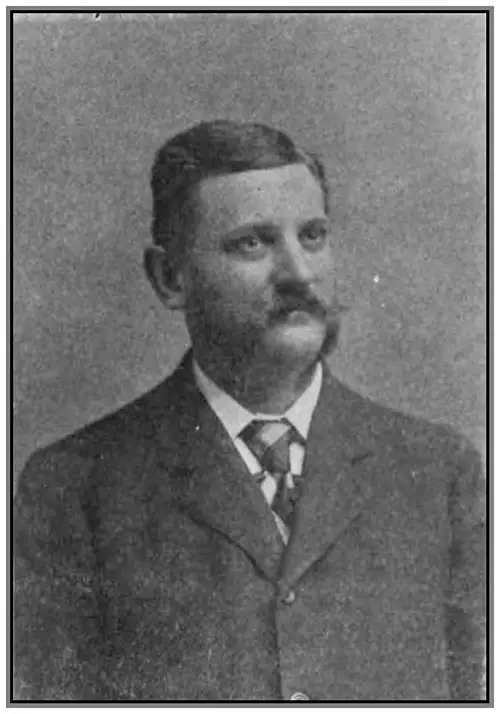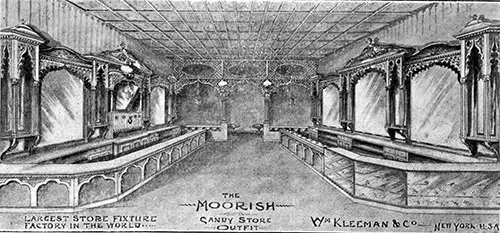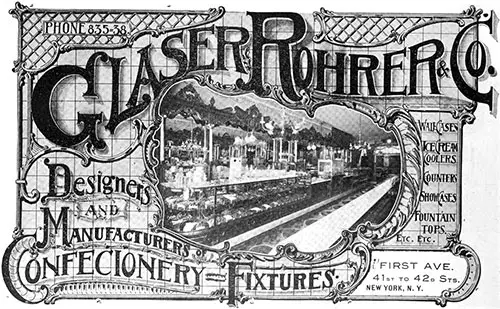The Candy Store of Thirty Years Ago - 1906

Thirty years ago, the confectionery business in this country was yet in its infancy and the lines of American candies were very limited indeed. There were no great assortments of counter goods or chocolates, and even the quality was not of the highest.
The present fine assortments were quite unknown, the best sellers and the most popular among consumers being American mixed, French creams, cream almonds, chocolate cream drops, gum drops, burnt almonds, lemon coconut, peanut candy, lozenges, marshmallows, the old-style unwrapped caramels, and molasses candy.
But they all brought good prices as will be seen when I mention that "American mixed" was not sold anywhere for less than thirty cents per pound, and the plain French creams, which were considered a very fine confection, fetched fifty and sixty cents per pound, and all other kinds I have referred to sold for proportionate prices.
The cost of sugar in those days varied from fourteen to sixteen cents per pound and cream was from twenty-two to twenty-five cents per quart. Glucose was unknown then and was not used in the manufacture of candy for a long time afterward.
Purchases were also put up in a very primitive manner. No boxes were given with a pound of candy, a bag being all that was considered necessary and upon the bag was usually printed the name and address of the confectioner.
But around the holidays there was a great demand for boxes, and they fetched what would now be considered outrageous prices, a customer being perfectly content to pay twenty-five cents and more for very ordinary ones, and there was a good demand for fancy ones at anything from one to five dollars each with no candy in them. Decorative cornucopias were also in great demand and fetched high prices, as the finest ones were then imported.

Fred. Klinck, Author of "The Candy Store of Thirty Years Ago"
The candy stores in those days were nothing like the ones we see today. No large plate glass mirrors, or bright fixtures and highly polished woodwork to give the place a neat and attractive appearance, but simply a short counter, generally twelve to fifteen feet long, one or two showcases, two or three shelves nailed to the wall with possibly a small looking glass in the center, and a dozen or maybe two dozen, of the old-fashioned plain candy jars.
The soda water department was also in its infancy in those days. Ice cream soda was not dreamt of, and plain soda water had only just become known. The principal drink called for was root beer, and twenty gallons would easily be disposed of to that of ten gallons of soda water.
There were no elaborate soda fountains then—a wooden box with something fancy on the top of it and a glass sign in the front and on the sides and there you have what was considered a fine apparatus in those days, but the marble fountain, introduced by Matthews a few years later, took the place of this wooden box.

The ice cream department was also in its infancy. Vanilla, strawberry, chocolate, and lemon were the only kinds obtainable, even in the largest confectionery stores, and in the winter the demand was so small that vanilla was the only kind sold.
Fruit ices were barely known and not popular, while the present brick ice cream was not put up at all. The custom was to send the ice cream out in two, three and four-quart fancy tins shaped as pyramids, melons, etc.
The price charged for it was fifty and sixty cents a quart over the counter and from fifteen to twenty cents a plate. A purchaser always brought a dish along in those days when ice cream was bought to take home; otherwise, it was put in a pail or tub made of heavy brown paper.
The present paper ice cream box, however, came into use about this time, but it was customary to charge five cents each for them, of course in addition to the price of the cream.
The manner ice cream was made in those days would now be considered antiquated, most of it being made with a paddle, but some of the most enterprising of the confectioners had installed hand-power machines, and these were considered great labor and time savers, until a little later gas engines came to our relief and they proved a veritable blessing for all of us.
It was, indeed, laborious work to turn the old-style hand power machine all day for the small pay a journeyman confectioner could command—twenty-five dollars per month and board being about the highest wages paid to first class workmen in those days.
As compared with the elaborate fittings of the present-day stores, I may mention that for two thousand dollars a confectioner could then fit up one of the finest looking stores in the country.
In conclusion, let me ask would any young man nowadays take his best girl into an ice cream parlor where the floor was uncarpeted.
I well remember the time when an enterprising confectioner in New York put a carpet in his ice cream parlor, but his action was not only the talk of all the confectioners in the city, but it was condemned and considered ridiculous.

Frederick Klinck, "The Candy Store of Thirty Years Ago," in Confectioners' and Bakers' Gazette, New York: Horace B. Winton, Vol. XXVIII, No. 303, December 1906, 6. 22+ ( Fred. Klinck is the Vice-President of the Retail Confectioners' Protective Association of the State of New York)
